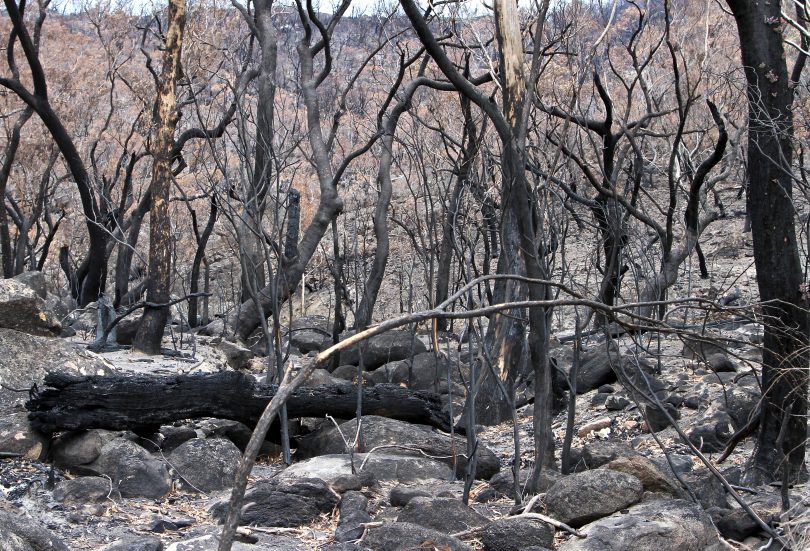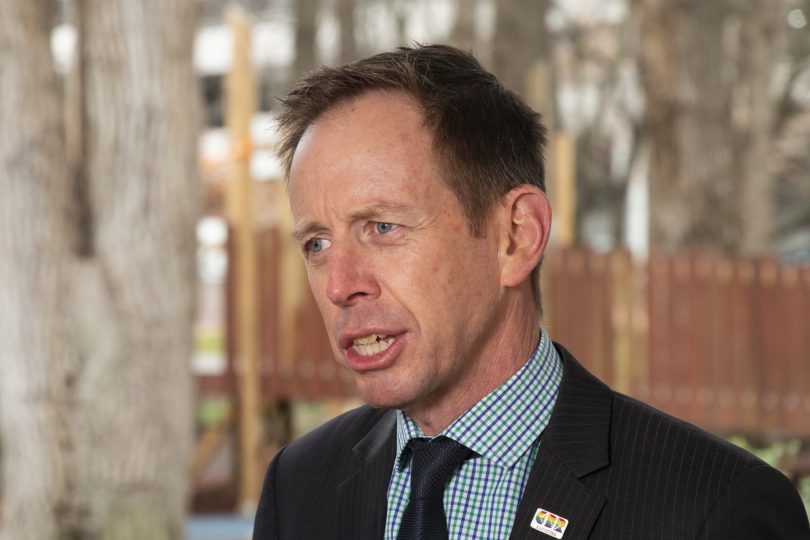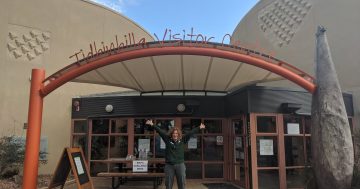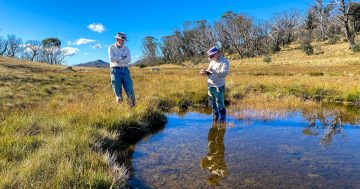
Around three-quarters of the Namadgi National Park was burnt during the Orroral Valley fire in February. Photo: Region Media.
Ten new Ngunnawal rangers would be employed to boost the Territory’s land management plan under a new environmental package pledged by the Greens ahead of October’s election.
The proposed four-year $53 million package would use traditional Indigenous knowledge and cultural practices to reduce the susceptibility and severity of fires in the ACT’s national parks through water and fire management. It will also aim to mitigate the threat from pest plants and animals, the party says.
The Greens announcement came just days after submissions to the ACT’s bushfire inquiry were made public. They revealed the discontent from rural landholders about the lack of bushfire preparation and ignorance of Indigenous burning practices ahead of the last fire season.
“If Aboriginal knowledge was applied and landscape hydration with carbon sequestration in the soil prioritised, land management choices and operations would be different,” the Rural Landholders Association (RLA) said in its submission to the Assembly’s Review of ACT emergency services responses to the 2019-20 bushfire season.
SEE ALSO: Broken trucks and demoralised firefighters: ACT bushfire review begins.
“The landscape we have today is the result of removal around 200 years ago of traditional owners, their knowledge and customs and the animals they lived with. The approach of ‘leaving nature to look after itself’ is a fallacy that discredits the millennia of active Aboriginal land management with their grazing animals (kangaroos and wallabies).
“[In Namadgi] boundary line fire trails are not maintained, so access to the park is not possible except through farms and routine management operations, like back burning and pest control, are not generally undertaken beside farmland by Government employed workers.”

The 2003 firestorm has painful echoes for many Canberrans. Photo: Scott Masters.
Leader of the ACT Greens and Minister for Climate Change and Sustainability Shane Rattenbury said the secure funding for the 10 new Ngunnawal rangers would help build the Territory’s resilience against more severe bushfire seasons.
“[The] 10 new Ngunnawal rangers [will ensure] we bring traditional knowledge into our parks management here in the ACT, including land and water management, but also traditional burning techniques to protect our landscape as it gets hotter and dryer,” he said.
“The ACT has had a number of Indigenous ranger positions over the years, but we want to make sure there are more of them and that they have long-term certainty. We have a lot of Indigenous people who go through their cultural land management training and then struggling to find a permanent position.
“We need to capture that knowledge, that skill, that training that has been put into our young Indigenous rangers coming through and put them into secure positions.”

Shane Rattenbury says the Greens would fund 10 new Ngunnawal ranger positions under its proposed $53 million environment package. Photo: Dominic Giannini.
Measures like fire stick farming and cool burning are used to clear flammable undergrowth and facilitate easier access to the countryside. One of the reasons the 2003 Canberra fires became so uncontrollable was because of the dryness of the eucalypt forests which had been desiccated by years of drought.
However, 17 years later, rural landholders say the “elephant in the room” during the Orroral Valley fire – the pest plant African Love Grass – could have led to much more devastating circumstances in 2020 had embers set the fields alight.
“Burning hotter, with higher flames than native Australian grasses of the same plant height, extensive dry stands of this weed are a risk to life and property all year-round,” the RLA said.
“The assurances about how the Government was so much better prepared than 2003 were not comforting given the dry conditions and fuel loads in the Namadgi National Park. The bushland vegetation regrowth from the 2003 fire was senescent and highly flammable.
“The huge effort coordinated by the ESA to notify people on Canberra’s southern urban edges to be ready to evacuate was no doubt driven by the knowledge of the consequences of a bushfire or ember shower in this thick, long, dry, grass surrounding Tuggeranong’s suburbs.”
There would be “no stopping it” if the fire reached the pastures that adjoin the city, the submission said.
Mr Rattenbury says that Canberra needs to come up with a comprehensive environmental protection plan with the same ferocity the Government showed in responding to the pandemic.
“To ready our city for our new climate reality, we must act to protect our environment, with the same boldness and decisiveness as we have the COVID crisis,” he said.
The inquiry into the response of the ACT emergency services during the 2019-20 bushfire season held its first public hearing yesterday. Two more public hearings will be held on 11 and 18 August.
The Committee will aim to hand down its final report in September, before the ACT election.















